Expert Review
Renault Master Panel Van (2020) review
Few large vans are as well known as the Renault Master. Hugely successful in its native France, the van has also gained a loyal following in the UK among tradespeople who applaud how capable it is at carrying loads, and how roomy and comfortable the cabin is. Auto Trader’s Tom Roberts takes a closer look.
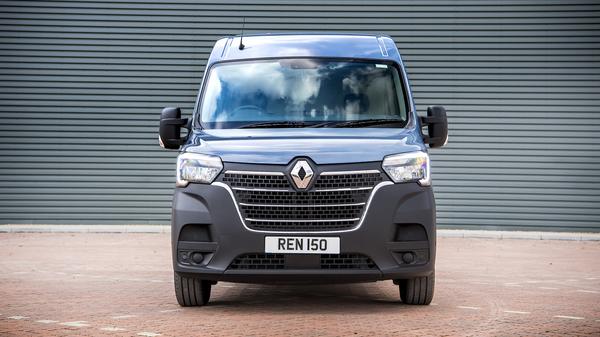

Words by: Tom Roberts
Published on 21 May 2024 | 0 min read
The Auto Trader expert verdict:
3
The Renault Master doesn’t pretend to be anything it’s not. It is a large van capable of carrying big payloads while keeping its driver in relative comfort. Bells and whistles aren’t the priority here, making the van affordable while keeping in trim with modern touches is what it’s all about - and it succeeds on both counts.
Reasons to buy:
- Good engines… and motors for the electric E-Tech model range.
- Solid, durable platform that’s capable of carrying strong payloads.
- Ready-made conversions, including Lutons and Low Loaders, available.
Cargo & practicality
We’re going to concentrate on panel vans here, but don't forget that the Renault Master is available in almost every shape and form as a manufacturer-supplied product. Chassis and platform cabs, tippers, dropsides, Luton and box vans - you name it, the Master is available in it. Renault specialises in passenger carrying vans, and the Master minibus is hugely popular. The van is also a favourite in the minibus conversion industry, where specialists transform the Master into mini coaches and patient transfer vehicles with disabled access. It’s not just bus conversions either, the Renault is also a popular base for making into a small horsebox. Four body lengths, three roof heights, three GVMs (Gross Vehicle Mass) and a choice of front or rear wheel drive form the base of the Master range - although the theoretical 72 permutations isn’t quite possible due to various restrictions. For example, RWD can only be specified on the two longest body variants. Despite this, you’ll be hard pushed not to find a Master that isn’t the right size and weight for your own needs. There are also crew van models for those who need additional passenger capacity - for example, moving teams between sites. The smallest Master, the L1H1, has a load length of 2583mm and a height of 1700mm, giving it a volume of 8 cubic metres. This van is only available at the lowest 2.8t GVM weight, but still offers a great payload of up to 873kg. For something more mid-range with a nice balance of volume and payload, take the front wheel drive L3H2. It has a load length of 3733mm and height of 1894mm, which combine to provide a usable volume of 13 cubic metres, while maintaining a payload of 1384kg. For those needing volume over everything else, take a look at the L3H3 ‘Long Overhang’ model, which (with an internal length of 4383mm) has a cavernous 17 cubic metres for you to stack your load in. If maximum payload is vital, the ultimate Master is the L1H2 at 3.5t GVM giving 1551kg, but if you’re prepared to operate your van at a GVM of 4.5t (with all the licensing and other implications this would have) the L3H2 Long Overhang cracks the 2-tonne barrier at 2061kg. For access, you have the typical twin rear/single side loading door arrangement, and there are plenty of lashing eyes to secure your load. As you’d expect, a full-height bulkhead protects the driver and passengers from unrestrained items entering the cab.
Expert rating: 5/5
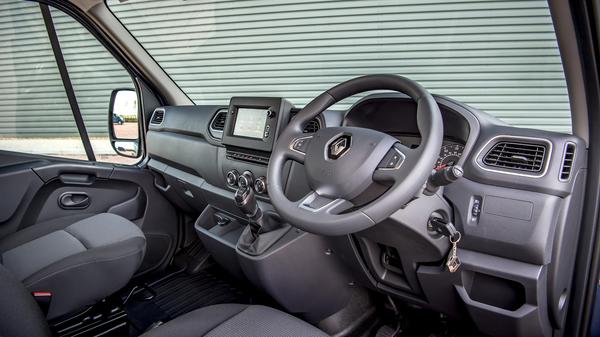
Interior
The Master has always had a great cab environment, and the 2019 upgrade saw a raft of upgrades from its predecessor. If you drive a van daily you’ll know how important storage in the cab is, and Renault has excelled here. There are cup holders, trays, shelves and bins galore, together with a 7.6-litre glovebox. In addition, in the higher trim models the centre seat folds down to function as a desk, even including a swivelling laptop tray. The cab is roomy and spacious, and the dash has a car-like feel to it, with quality materials seemingly being used throughout. There’s lots of tough plastic, lots of durable fabrics and plenty of space, but perhaps a few less interesting things to make use of.
Expert rating: 3/5
Running costs
Official fuel consumption figures vary depending on the model of van, but typically you're looking at 29-33mpg for the majority of the range - this drops to around 21mpg for the long overhang derivatives, so bear that in mind. Also, the competitive pricing can be made even more competitive on a lease, if you can find the right deal on the right model.
Expert rating: 3/5
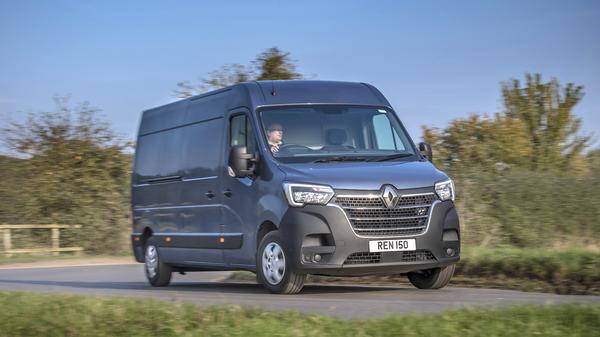
Reliability
All Master vans have a three-year/100,000-mile warranty. Service intervals are every two years or 24,000 miles - but the E-Tech requires an initial service on its first birthday, or at 12,000 miles if sooner. Pretty standard and a reliable indicator of the manufacturer’s faith in its van.
Expert rating: 3/5
Performance
All the engines available for the Master are 2.3-litre twin turbo diesel units, which conform to either Euro 6D or Euro VI emission regulations. If you decide a front wheel drive Master fits the bill, you can opt for either a 110HP, 135HP 150HP or 180HP version. If rear wheel drive is your bag, slightly more restrictive options of 130HP or 145HP are available. And, if you need automatic transmission, the 6-speed unit is only available with the 150HP and 180HP engines. Go for FWD and you’ll benefit from a loading height 13mm lower than its RWD sibling and a greater choice of engines. Rear wheel drive tends to offer better traction, payload, and is preferable when towing (the Master also has an additional 500 kg of towing capacity when the rear wheels are driven). The electric Master, formerly known as the ZE but now coming under Renault’s E-Tech branding, is a fully-electric van with a 57kW motor powering the front wheels. There’s just a single battery pack option with a capacity of 33kWh available, which gives the van a WLTP combined cycle range of 75 miles. This is far from class-leading and realistically restricts the E-Tech’s appeal to those operating close to base - perhaps small businesses carrying out local deliveries, or for tradespeople who tend to work close to home. Charging is pretty swift though, with the typical 7kW home or workplace wallbox getting the battery back up to 100% in around 6 hours.
Expert rating: 3/5
Ride and handling
The Renault Master suffers while unloaded with the usual roll and wobble, but stiffens nicely up under load and proves to be one of the more comfortable large vans to drive. The E-Tech benefits from being heavy already, thanks to the battery packs, so even unloaded will drive with confidence. Seating height combined with stiff suspension is the winner here, hence why in this section the Master gets a confident nearly-top mark.
Expert rating: 4/5
Safety
Every van comes with side wind assist, hill start assist, trailer swing assist, and the ESC system has a handy tool called Grip Xtend, which can help at times when traction is otherwise a bit ropey. For security, there’s a Thatcham category 1 alarm, but for reasons which I’m sure will be obvious to some (not me), this isn’t offered with the E-Tech. I’d score the Master higher here if it wasn’t for the fact that many large vans feature these technologies at base level, so it doesn’t really do anything to set itself out from the crowd.
Expert rating: 3/5
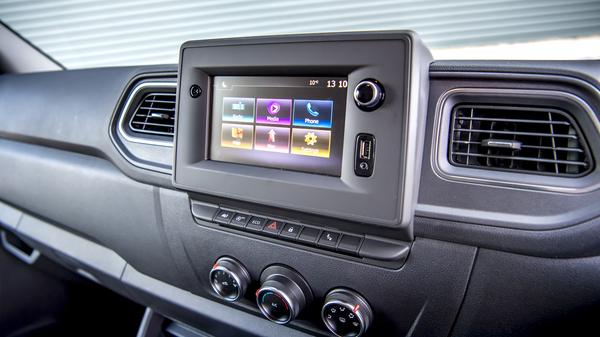
Equipment
The first of two trim levels is ‘Business’. As standard, you’ll find on the outside electrically-adjustable heated door mirrors and some nice C-shaped daytime running lights. In the cab, there’s a DAB radio with Bluetooth connectivity and electric front windows. On the face of it, there’s little more to shout about, but where the Master scores highly is the number of driver and safety aids fitted. Next up is ‘Business+’. In the cab, you get the centre seat back desk I mentioned earlier, and the driver’s seat includes an armrest. For comfort, there’s air conditioning and rear parking sensors to help to avoid those little knocks and scrapes. Tatcham alarm systems are available on the diesels as standard, but not on the E-Tech, and that odd inconsistency is jarring enough to pull the Master down in this category.
Expert rating: 2/5
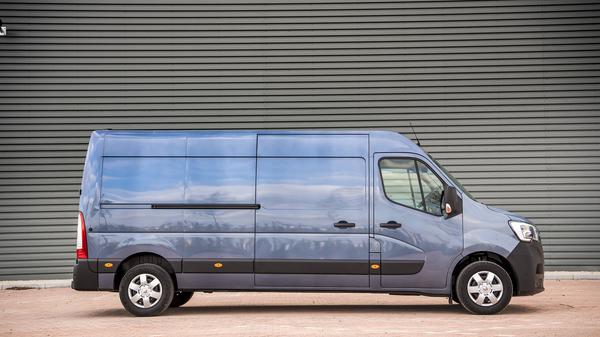
Why buy?
What were you doing in 1980? Quite possibly you weren’t even born, but that was the year that Renault first introduced the Master large panel van. Even by the dubious standards present over 40 years ago, it wasn’t a pretty thing. In this form, the Master stayed in production for an impressive 18 years before the more conventional looking replacement was launched in 1998. So, the Master clearly isn’t the newest kid on the block and this was evident until the 2019 update saw the arrival of the huge front grille with its integrated wrap-around bumper and high bonnet level. This is a look that most manufacturers are adopting and from this angle the Master looks up to date. Otherwise, I suppose it’s difficult to make a large panel van look smart but the Renault is starting to show its age. Don’t forget though, most people lease or buy a large van to do a job, not to look pretty on the drive - the Master certainly passes that test. If I’m honest, I reckon the equipment level fitted as standard lets the Master down a little. It’s one of the few (maybe one of the only) large vans that doesn’t have a touchscreen, most of which now include smartphone integration, and there’s no cruise control which is usually found on the competitor vehicles. To be absolutely fair though, the options list is long and it could be that the French manufacturer decided that customers might want to build a van to their own requirements, and not pay for items that they don’t want or need. I can admire the train of thought, but ultimately it leaves the Master with ground to make up in a marketplace where the Ford Transit and the Stellantis large vans offer significant upgrades on equipment, safety and looks. However, see what you think, don’t just take my word for it - you could find that the Master is everything you’ve wanted in a large van, especially if you can grab one on a good finance or lease deal. What I do like about the Master is that it doesn’t pretend to be anything else other than a competent workhorse - a role that it fulfils really well. There are few bells and whistles, and the Renault can hardly be described as being decorated like a Christmas tree - but a large van needs to earn its keep and the Master does what it says on the tin. Yes, maybe it is lacking a little in creature comforts compared to the competition, but don’t overlook that extensive options list. There’s a great choice of engines and I know the range on the E-Tech isn’t fantastic, but with so many van operators working close to home, don’t be too quick to rule it out. I love the cabin, it’s one of my personal favourites – for the van driver who uses the van as his or her workplace for 8 hours a day, the room and storage on offer will be much appreciated.
Expert rating: 3/5